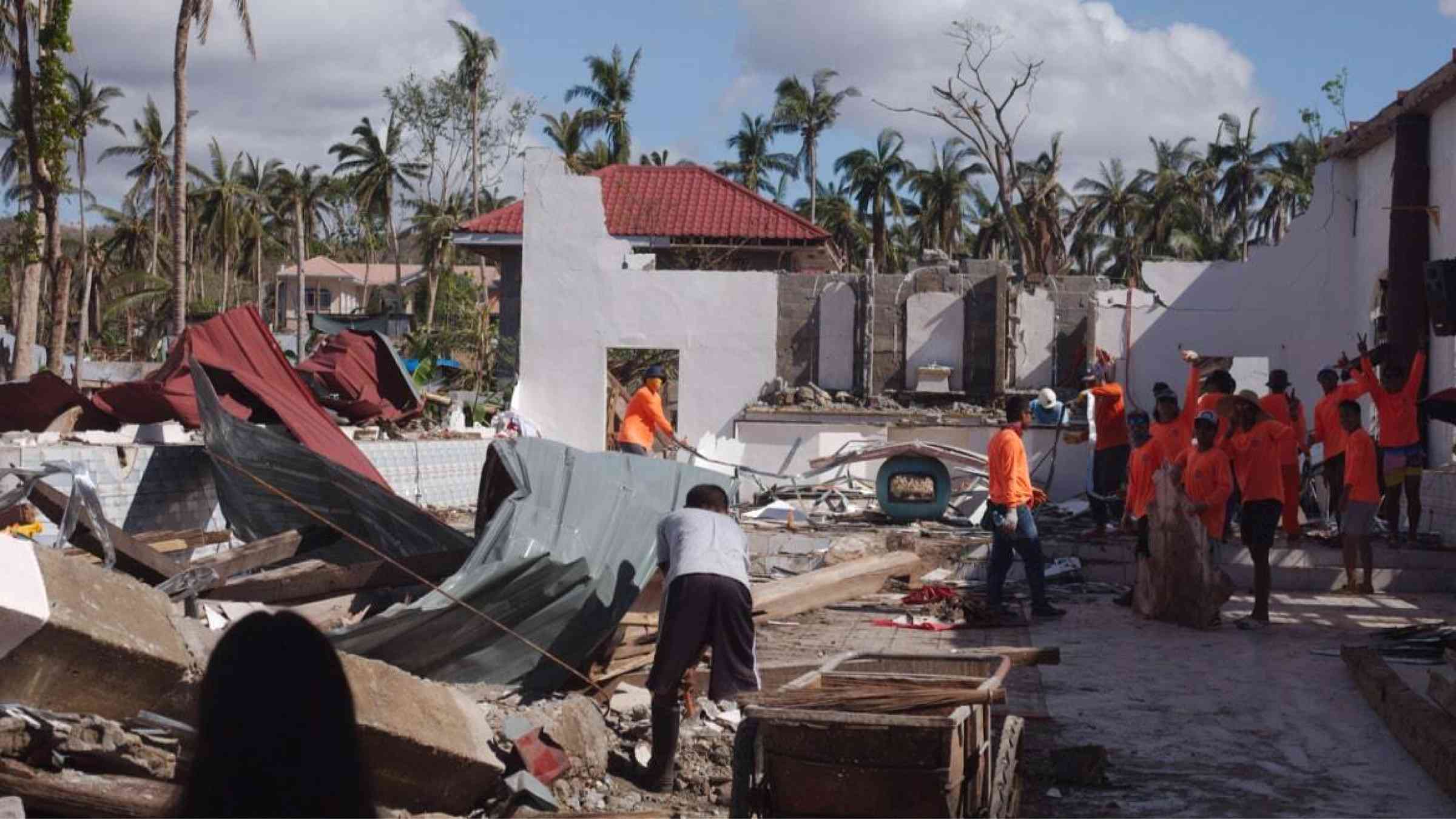Please help us improve PreventionWeb by taking this brief survey. Your input will allow us to better serve the needs of the DRR community.
Vulnerable Philippines – working towards climate adaptation

Last year, the World Risk Index 2022 put the Philippines at the number one spot for the most-disaster-prone country in the world.
The WRI report gave the country an index score of 46.86, the highest among the top ten most-disaster-prone countries worldwide because of high risk, exposure, and vulnerability (Dela Pena, 2023).
The top ten most disasters prone countries are the following, in second place is India with an index score of 42.31, followed by Indonesia with 42.31, Colombia with 38.37, Mexico with 37.55, Myanmar with 35.49, Mozambique with 34.37, China with 28.70, Bangladesh with 27.90, and Pakistan with 26.75.
Causes of Vulnerability
An average of 20 typhoons enter the Philippines annually, with the most intense coming between July and October; each one could bring damaging floods and landslides.
Other reasons for the Philippines’ vulnerability and high risk are its location in the ring of fire and typhoon belt in the Pacific Ocean, where many earthquakes and volcanic eruptions occur.
Poverty and underdevelopment also make the county vulnerable to disasters.
A study by the Asian Development Bank shows that Filipinos living in poverty, including those whose livelihoods depend on agriculture, are most impacted by climate change consequences and extreme events (Poor Filipinos, 2023).
Global Risks Report 2023 by the WEF revealed that the top risk faced by the country in the next two years is natural disasters and extreme weather events. This is followed by a debt crisis, rapid and sustained inflation, misinformation, and geopolitical contestation of resources.
Some of the problems are the effects of the Covid-19 pandemic lockdowns, restrictions that slowed down businesses, and the government’s borrowings to mitigate its economic impacts.
But as the pandemic restrictions eased, particularly in 2022, when the Philippine economy reopened, economic recovery started kicking in.
Natural disasters like typhoons that regularly hit the Philippines could easily take back any economic gains the country has.
Souleymane Coulibaly, a lead economist of the World Bank, notes that climate change effects such as rising temperatures and sea levels, intensified droughts, and stronger typhoons can slash the GDP of any country by 13.6% by 2024. In the absence of government interventions, these disasters inflict the greatest suffering on the poorest. (Dela Pena, 2023).
What the Philippines is doing about climate change
The Philippines passed the Climate Change Act in 2009 to adapt to climate change and mitigate its impacts.
The Climate Change Act creates the Climate Change Commission, which is the policy-making body tasked to coordinate, monitor, and evaluate the programs and action plans of the government relating to climate change. The Climate Change Act also requires the Local Government Units (LGUs) to develop their Local Climate Change Action Plan (LCCAP).
In April 2010, the country adopted the National Framework Strategy on Climate Change (NFSCC), which shows the country’s commitment to ensuring and strengthening the adaptation of natural ecosystems and human communities to climate change.
The framework aspires to chart a cleaner development path for the Philippines, highlighting the mutual benefits of both climate mitigation and adaptation and serving as a roadmap on which the national climate change program will be based.
Following the NFSCC adoption, the country formulated the National Climate Change Action Plan (NCCAP) for 2011 to 2028.
The country’s first action plan outlines the Philippines’ specific program and strategies for adaptation and mitigation under seven key priorities: food security, water sufficiency, ecological and environmental stability, human security, climate-friendly industries and services, sustainable energy, and knowledge and capacity development.
Considering the country’s high susceptibility to disasters and climate change impacts, President Ferdinand Marcos, Jr. increased its climate change funds allocated for programs in 2023 by about 48%.
Climate Change Commission vice chairman and executive director Robert Borje say that a total of P453.1 billion has been allotted this year by national government institutions (NGIs) for climate change expenditure to be used for adaptation and mitigation programs (Flores, 2023). The climate change budget will allocate 83% for adaptation and 17% for mitigation.
“We have to ensure that various government agencies and various government institutions, not just plan, but actually implement these climate change programs,” he added.
Philstar reports that “Borje also welcomed the inclusion of an accelerated climate change agenda in the Philippine Development Plan 2023-2028, saying this will further strengthen the commitment of the Philippine government to deliver on key climate actions.”
The news report also added that the PDP “presents the five-year vision of the Marcos administration toward an upper middle-income and low-carbon development, and a climate-smart and climate-resilient Philippines” (Flores, 2023).
Explore further
Please note: Content is displayed as last posted by a PreventionWeb community member or editor. The views expressed therein are not necessarily those of UNDRR, PreventionWeb, or its sponsors. See our terms of use
Is this page useful?
Yes No Report an issue on this pageThank you. If you have 2 minutes, we would benefit from additional feedback (link opens in a new window).